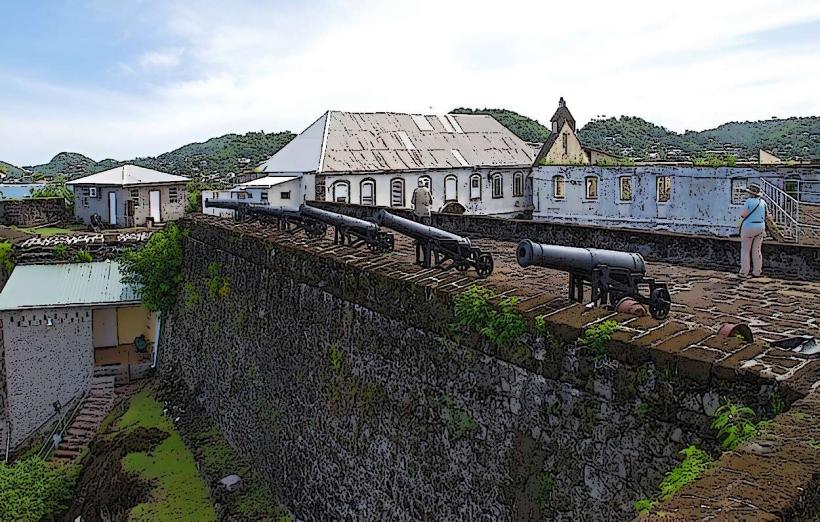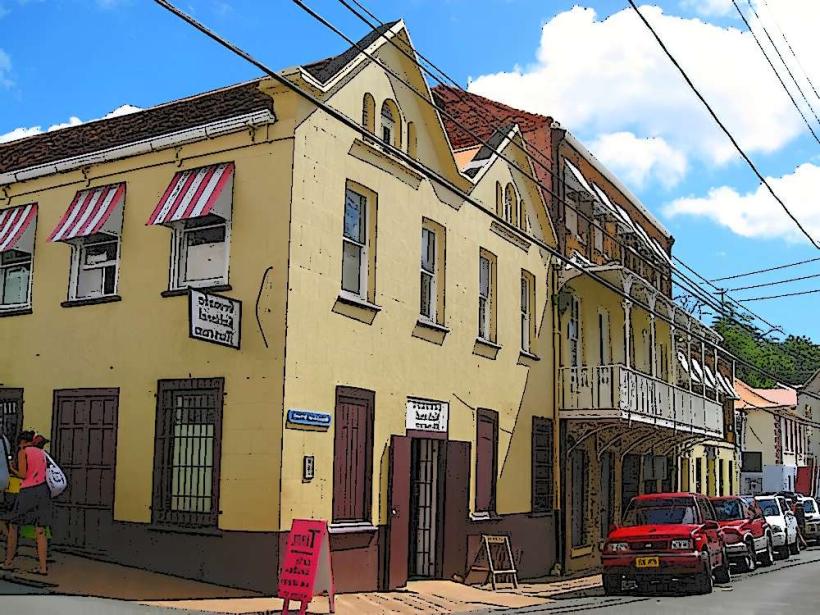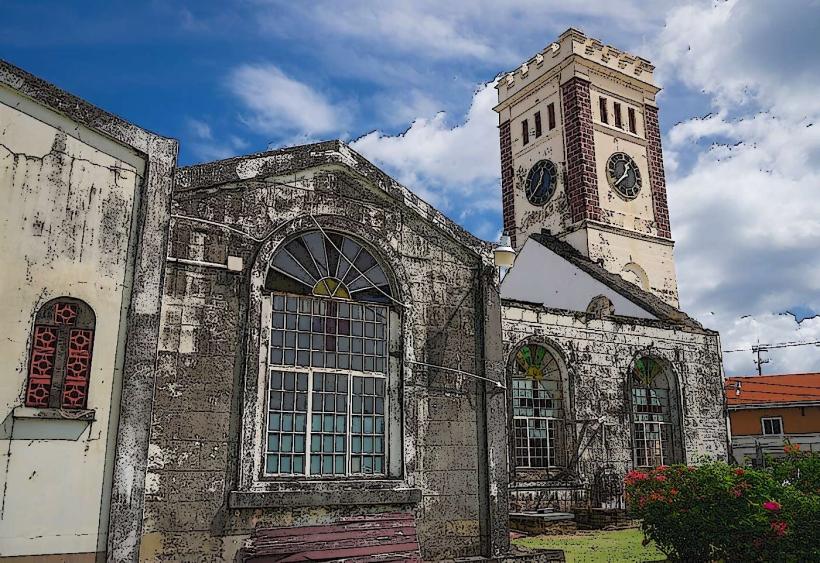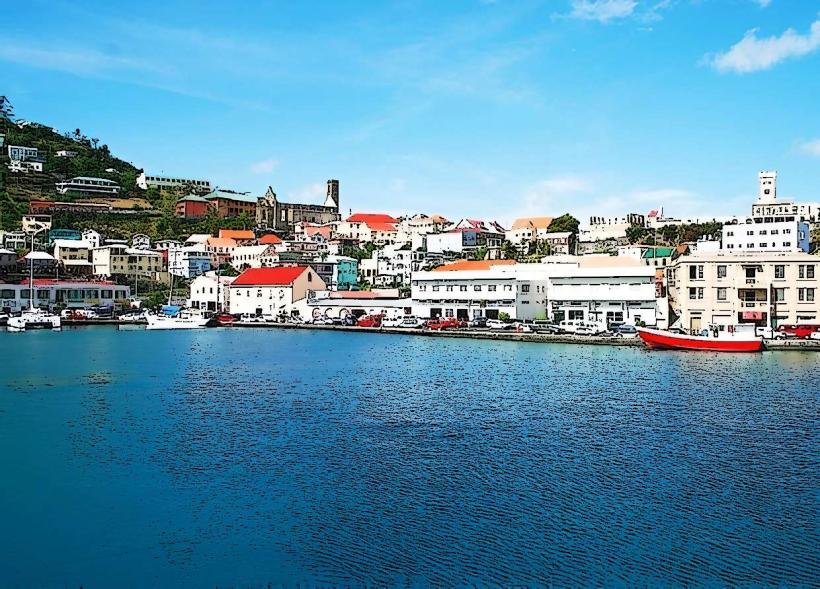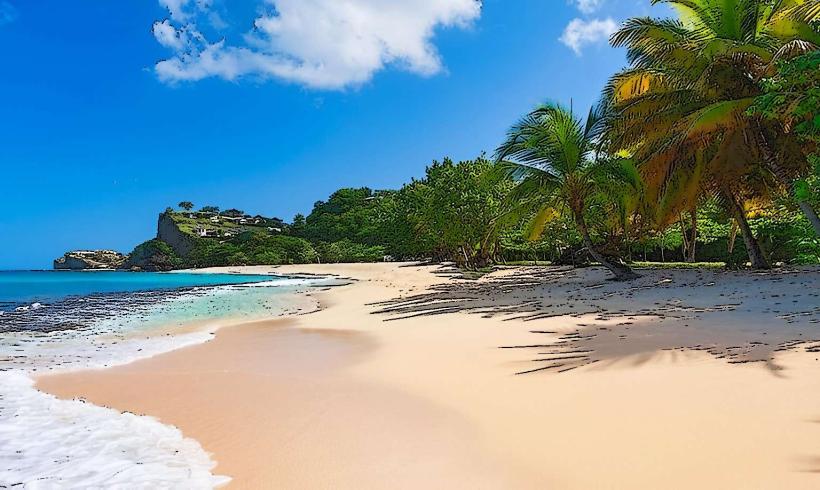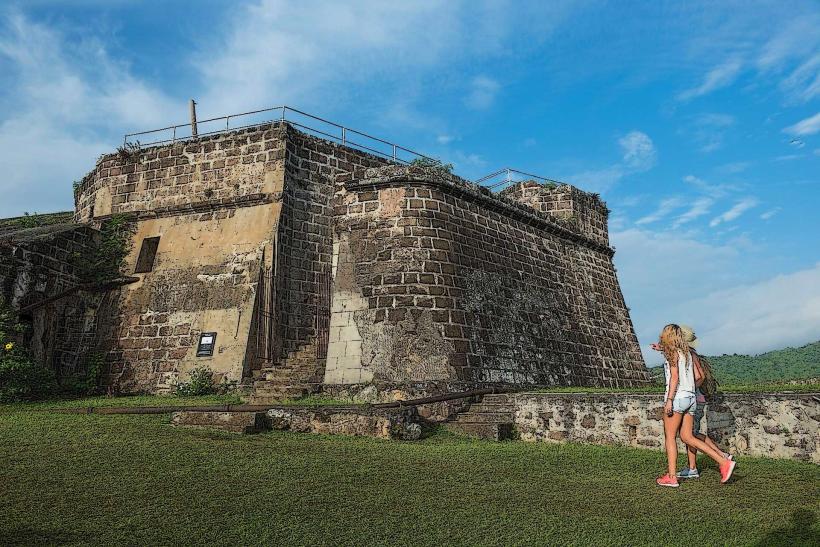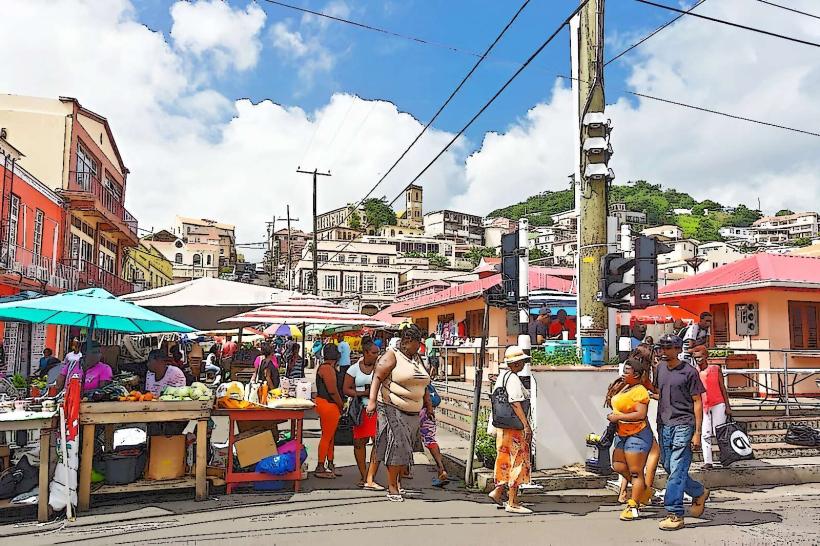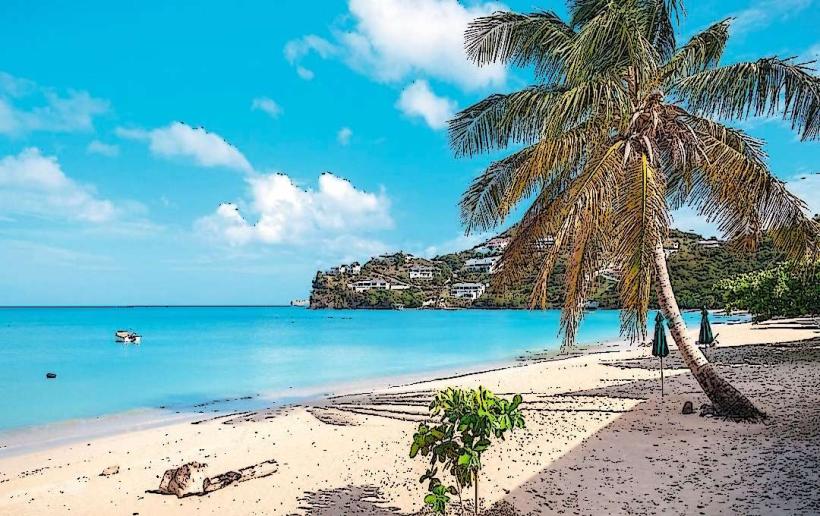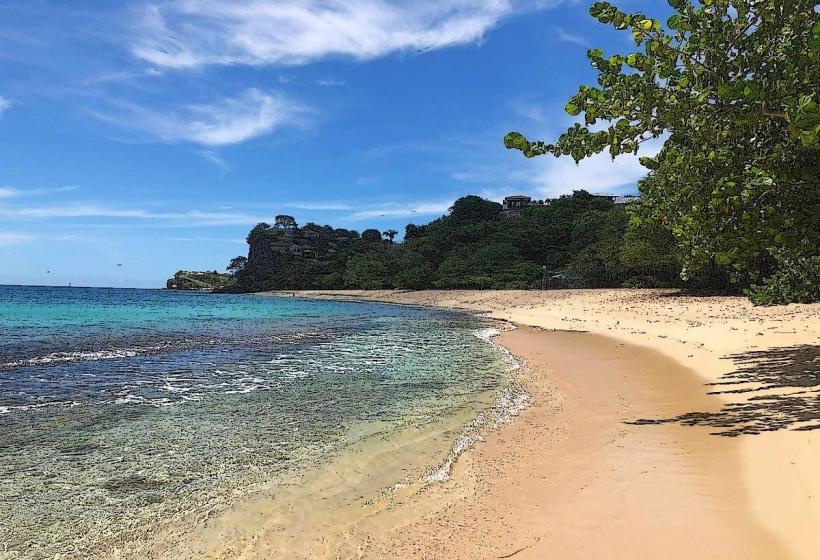Information
City: St GeorgesCountry: Grenada
Continent: North America
St. George’s is the capital and largest city of Grenada, a small island nation in the Caribbean Sea. Known for its picturesque harbor, colonial architecture, and vibrant local culture, St. George's is a popular destination for both travelers and locals. The city is located on the southwest coast of Grenada, surrounded by steep hills and lush tropical vegetation, which provide stunning views of the harbor and the coastline.
History
St. George’s has a rich history shaped by its colonial past and the Caribbean slave trade. Originally inhabited by the Carib and Arawak people, the area was colonized by the French in the 17th century before coming under British control in the 18th century. The French influence is still evident in the city’s architecture, culture, and street names.
During the transatlantic slave trade, St. George’s served as an important port for the importation of enslaved Africans who worked on the island’s sugar plantations. After emancipation in the 19th century, Grenada became a British colony, and St. George’s continued to develop as a vital port and administrative center.
In 1974, Grenada gained independence from the United Kingdom, and St. George’s became the country’s political, economic, and cultural center. It has since become a bustling hub for tourism, agriculture, and commerce.
Economy
St. George's is the economic heart of Grenada, with industries such as tourism, agriculture, and fisheries playing major roles in the local economy. Grenada is known for its production of spices (especially nutmeg), as well as its cocoa, bananas, and other agricultural products, and these industries are an important part of St. George’s economy.
In recent years, tourism has grown significantly, with visitors drawn to the island's natural beauty, pristine beaches, and vibrant culture. St. George’s is the gateway to Grenada's attractions, and it is home to numerous hotels, restaurants, shops, and markets catering to tourists.
Fisheries also contribute significantly to the local economy, with St. George’s serving as a major port for the island’s fishing industry. Local fish and seafood, including lobster, tuna, and snapper, are commonly found in the markets and are an integral part of the island’s cuisine.
Tourism and Attractions
St. George's offers a variety of attractions, from its stunning harbor views to its historical sites and natural beauty. Some of the key attractions include:
Carenage Harbor: The most iconic feature of St. George’s is its scenic harbor, Carenage, which is surrounded by hills and lined with colorful buildings. The harbor is a popular spot for both local fishermen and tourists. Visitors can stroll along the waterfront, take boat tours, or simply enjoy the picturesque views.
Fort George: Overlooking the harbor, Fort George is a historic military fort built by the French in the 18th century. It was later expanded by the British and served as an important strategic military site. Today, the fort offers panoramic views of the city, harbor, and surrounding coastline, making it a popular spot for tourists.
Fort Frederick: Another important historical site, Fort Frederick is located on a hill overlooking the Carenage. It was built in the 18th century by the French and offers stunning views of the island, including the city of St. George’s. The fort has been partially restored and is now a great spot for exploring the island's military history.
Grand Anse Beach: While not directly in St. George’s, the nearby Grand Anse Beach is one of Grenada’s most famous and beautiful beaches. It features soft white sand, crystal-clear waters, and an array of water sports and activities, making it a favorite among tourists.
Market Square and Spice Market: St. George’s is known for its vibrant markets, particularly the Spice Market and the Public Market. The Spice Market is where visitors can purchase local spices, including Grenada’s famous nutmeg, as well as other fresh produce, crafts, and souvenirs.
National Museum of Grenada: Located in the heart of St. George’s, the National Museum provides an in-depth look at Grenada’s history, including its colonial past, the Caribbean slave trade, and its path to independence. The museum also showcases the island’s natural history and cultural heritage.
St. George’s Cathedral: This Anglican church is an important architectural landmark in the city. Built in the early 19th century, the cathedral has a distinctive Georgian style and is a significant place of worship and community gathering for locals.
Annandale Waterfall: While not located directly in St. George's, the Annandale Waterfall is easily accessible from the city. The waterfall is set in a lush, tropical forest and is a popular spot for hiking, swimming, and enjoying the beauty of Grenada’s natural landscapes.
Geography and Climate
St. George’s is located on the southern coast of Grenada, nestled between lush hills and the Caribbean Sea. The city is characterized by steep, hilly terrain and beautiful waterfront views. It has a tropical climate, with warm temperatures and high humidity throughout the year. The rainy season typically runs from June to November, while the dry season is from December to May.
The surrounding hills provide stunning views of the town and the coastline, and the area is known for its lush vegetation, including palm trees, tropical flowers, and rainforests. The natural beauty of the region is one of the key attractions for tourists, and outdoor activities such as hiking, swimming, and snorkeling are popular pastimes.
Culture and Traditions
St. George’s, and Grenada in general, is a melting pot of cultural influences, with a mix of African, European, and Caribbean heritage. The Caribbean music scene plays a large role in the culture of St. George’s, with genres such as calypso, soca, reggae, and steel pan music being widely celebrated.
The Carnival (known as Spicemas) is one of the most important cultural events in Grenada. Held annually in August, the festival features lively parades, colorful costumes, music, dancing, and street parties. It is a vibrant celebration of the island’s heritage and a time when the city comes alive with energy and excitement.
Local cuisine in St. George’s is a reflection of the island’s diverse culture. Spices, particularly nutmeg, are key ingredients in Grenadian cooking, and dishes often include fresh seafood, curry goat, roast breadfruit, and callaloo soup. Many of these dishes can be found in local restaurants and food markets.
Transport and Accessibility
St. George’s is well-connected to the rest of Grenada by road, and public transportation, including buses and taxis, is readily available. The town is relatively small and walkable, with most attractions located within close proximity to one another.
Grenada’s Maurice Bishop International Airport is located about 8 kilometers (5 miles) from St. George’s and offers both domestic and international flights, connecting the city to major hubs in the Caribbean and beyond.
Conclusion
St. George’s is a vibrant and historically rich city that offers visitors a unique blend of Caribbean culture, colonial history, and natural beauty. Whether you’re exploring the forts and museums, relaxing on nearby beaches, or soaking in the sights and sounds of the bustling markets, St. George’s provides a welcoming and memorable experience for travelers looking to discover the charm of Grenada.

